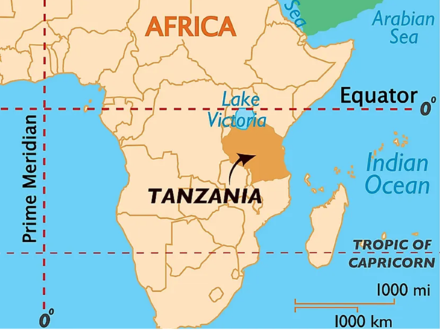
Cycling the unspoilt western part of Tanzania was a joy, but also an adventure we won’t forget anytime soon!
Kasumulu (Border with Malawi) – Mbeya – Tunduma – Sumbawanga – Katavi NP – Mpanda – Kigoma – Mwenene (border with Burundi)
1,080 km cycled
April 1 – 26, 2023
Watch the video!
Border crossing
This was a hassle-free, efficient experience. We filled in a couple of forms, showed our Covid and Yellow Fever vaccines, handed over 50US$ per person and had our multiple entry three-month visas in about 15 minutes.
The money-changing experience was not as pleasant as it had been on every border crossing to date. The local dealers were quoting a price 30% lower than the official internet rate… and throughout the whole town, they were all singing from the hymn sheet. We have since learned that there is a black market in Malawi creating an artificial value for their Kwachas that the Tanzanians don’t recognise.
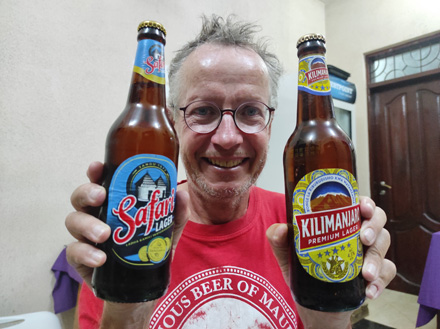

First impressions
The presence of motorised traffic in all its forms in Tanzania made for a loud and hectic transition from Malawi. Music blared from every other shop and the locals didn’t talk – they shouted. A different breed altogether!
Our entry to Mbeya was the most hectic cycling experience of the trip to date. Just imagine a city with a population of some 600,000, all on the move at the same time in tuk-tuks, minibuses and motorbikes on a narrow road with a wavy surface where the bicycle tends to be and you have a cyclist’s nightmare. Once off the main drag, we enjoyed the laid-back atmosphere and setting reminiscent of Nepal!
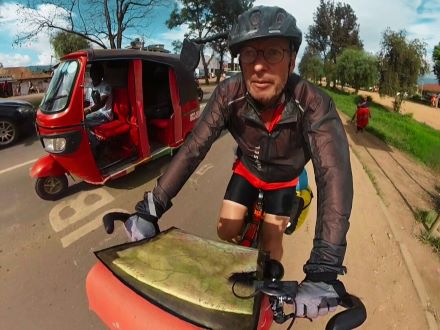

One pair of flip flops awaited us in our first hotel room, and we weren’t sure if they for use in the bathroom or bedroom… after all only one breakfast was included in the 4€ room price! With a squatting loo and a fully tiled floor serving also as a shower floor, it quickly became clear that the flipflops were the local answer to health and safety in the bathroom!
South West Tanzania
Tea, coffee, passion fruit and cardamom added interest to our ride through South West Tanzania, where we hovered between 1500 and 1700masl for most of the ride. It was great to be in the mountains again and at times it reminded us of Ireland, not least because of the 39 shades of green! 😉



Eat insects!
While browsing one of the local grocery stores to stock up on supplies, Kurt spotted something unusual on the counter: a styrofoam package of East African horn grasshoppers /bush crickets. The shop assistant assured us that they were really tasty and that we’d enjoy them, so we splashed out 2 Euros for the package.
Little did we know that they would turn out to be our Easter Sunday lunch on the road, when there was little else available. The legs and wings had been removed and they had been fried and salted. The eyes were still visible, so there was no hiding the fact that we were eating insects, but the predominant flavour wasn’t far off potato chips. This would be one example of an environmentally friendly source of protein for the future. Are you ready to make the change?

Eaten alive!
Our approach to Katavi NP was met by the local welcoming party of thousands of tsetse flies, who insisted on escorting us for the full 60km dirt trail through the park. Now, these flies look not too unlike the normal house fly, except they can transmit trypanosomiasis, otherwise known as sleeping sickness. High fever, headaches, fatigue and muscle aches precede death if it is not treated.
We dressed up with long sleeves and pants and even pulled out the nets that Darina had bought as a joke before leaving for Africa, We were all set. NOT. Being the only tourists in the park that day, these pests had an absolute field day. They even bit through our gloves. And boy do they bite! Having read studies that highlighted tsetse flies’ affinity to certain colours, Darina finally found a practical reason to don her luminous yellow socks, while 67 bites on Kurt’s back confirmed their attraction to blue!

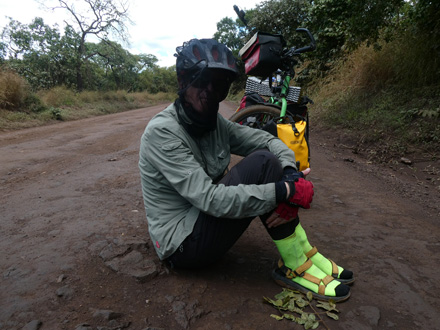

Close encounters!
Katavi continued to deliver on adventure. Totally sidetracked with these tsetse flies, we were aware of breaking branch sounds left and right of the road, which Kurt kept dismissing as “monitor lizards and guinea fowl!”. Not having any of it, Darina approached the grass margin to investigate, and before she knew it, she came eyeball to eyeball with the most serene lioness you could imagine. The lioness continued to sit and observe as Darina’s reaction slow motioned from awe to the realisation that she wasn’t in the safety of a safari jeep and that 2m was probably not the safest distance to have between a cyclist and one of these wild cats! As composed as is possible in such a situation, Darina continued on her merry little way, thankful to this day that it was 13:30 in the afternoon and the lioness had already eaten!
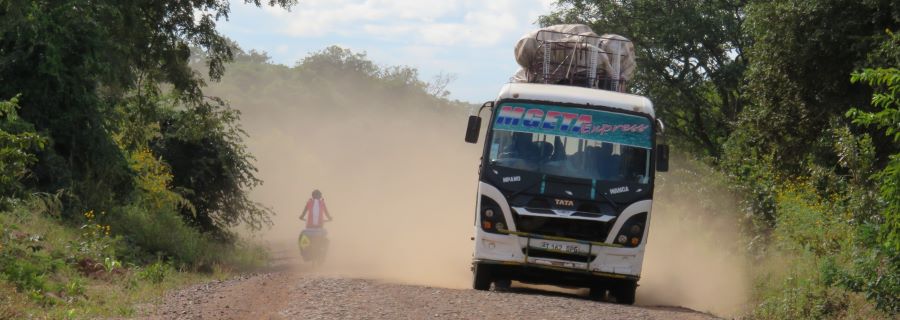
Not 30 minutes later, as the thunder rolled and a torrential downpour started, Kurt’s loud curses and frantic swatting of tsetse flies startled a bull elephant in the bushes as he cycled by. Now it’s not clear who got the greatest fright, but in any case the elephant charged Kurt trumpeting for all he was worth for a good km down the track. Kurt was able to maintain his 200m headstart, and at some stage the elephant lost interest and pounded back into the bushes. What an adrenaline rush! It certainly was the ride of Kurt’s life!
Guess we won’t be forgetting Katavi NP anytime soon! They say Africa is not for sissies. This may be true, but we will be equipped with a DEET-based repellent next time round! 😉

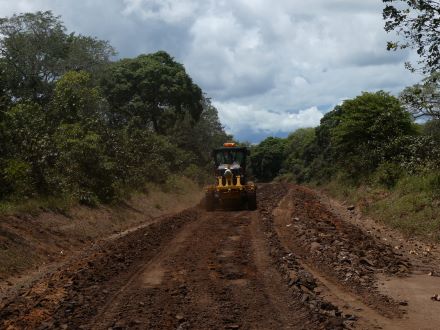
Remote beauty
After our near escapes in Katavi NP, we continued north to Kigoma, and it was the 160km section of red dirt that won us over.
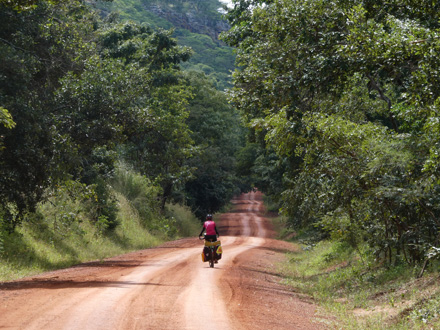


Of course, the Nkondwe Waterfalls and our pick of exceptional wild camp spots were the cherries on top!



Lake Tanganyika in Kigoma was the perfect spot to rest up before the last steep climb up to the Burundi border. We enjoyed fresh fruit stalls, a happening market, swims in the lake and also obtained our Burundi visa from the local consulate.


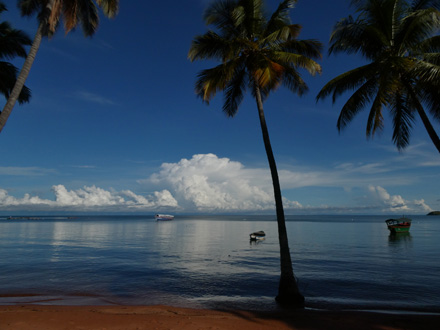
A little history
Ujiji, just outside the town of Kigoma, was the site of a very historical meeting. Dr David Livingstone, a Scottish missionary who had been out in Africa for many years, had not been heard of in Europe for some time. In search of a story, the New York Herald sent Henry Morton Stanley (journalist/explorer) out to find him dead or alive. It was under a mango tree in Ujiji in 1871 that Stanley happened upon the other mzungo (white person) and uttered the famous line: “Dr Livingstone, I presume.“


Apart from being a medical doctor and missionary, Dr Livingstone was a major campaigner against slavery. Ujiji, at the time was an important trading centre for slaves and ivory coming from the shores of Lake Tanganika. Although slave trade was officially abolished in 1873, it continued in this area into the 20th Century. The slaves gathered in this area were sent to the slave market in Zanzibar and then to Arab countries, Persia, India, Mauritius, Reunion, India and the Dutch Cape Colony in South Africa. A lot of the slaves ended up working on the clove and cononut plantations in Zanzibar and Pemba Islands off Tanzania.

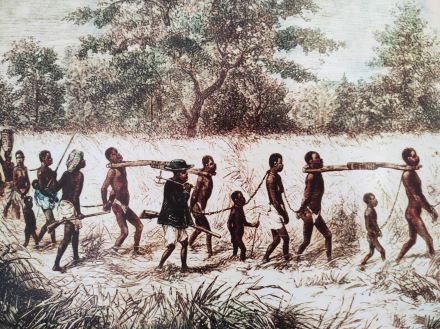
Food
Breakfasts in Tanzania are like a box of chocolates. You just never know what you’re going to get! They varied from chapati, beans and rice to plantain and goat soup to fresh fruit salad and omelettes, with everything in between! Lunch/dinners were usually goat/beef/chicken/fish with beans and chapati/rice/ugali (maize or cassava porridge). A go-to snack was chipsi mayai (potato chip omelette) – the Tanzania answer to Tortilla Española. Breakfasts at the market or roadside foodstalls generally set us back between 2,000 and 3,000 Shilling (0.75-1.20 €), while main courses ranged from 3,000-10,000 Shilling (0.75 – 4€) depending on location.



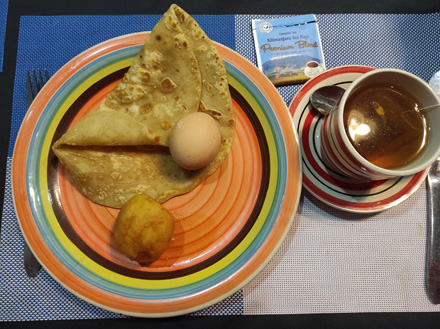
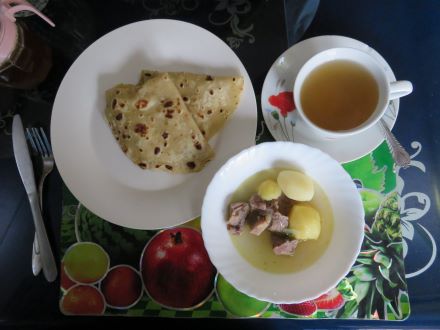


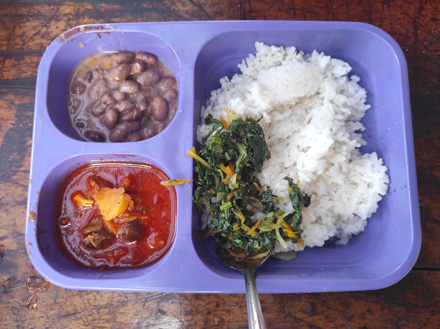
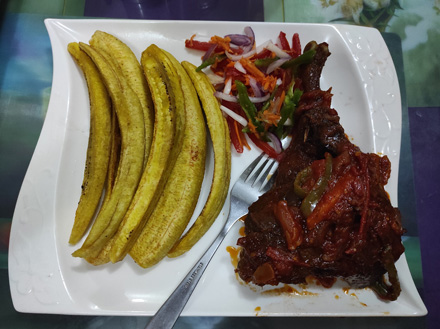


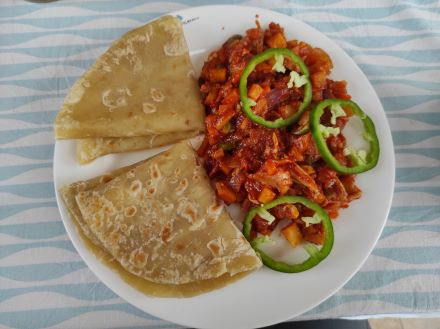


Accommodation
We had a few lovely wild camping spots on this stretch, but if the heavens opened and a lodge was in sight, we didn’t complain. A simple room with squatting toilet cost between 10,000 and 20,000 Tanzanian Schillings (4-8 €) and for 40,000 TZS (15 €) you could have a little more luxury.


The verdict
It says a lot about a country and its people if the word you hear most frequently is karibu (welcome)! Three cheers to the Tanzanians for making us feel so welcome, despite our feeble attempts at Swahili. Asante (Thank you)!


Actually apart from great conversations with government employees, who all mastered the English language, our communication with the locals was limited to pleasantries and sign language, assisted by Google Translate. Pity. This was the first time on this trip that, at least in the bigger towns and cities, our English and Spanish were just not enough.

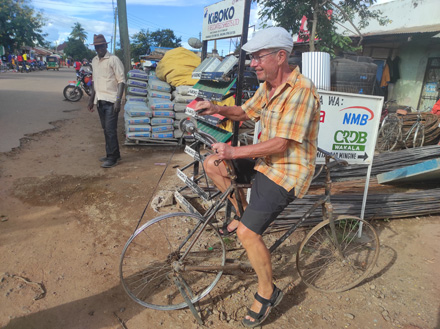
This off-the-beaten track through Western Tanzania paid off nicely, and Lake Tanganyika was certainly a wonderful place to bid the country farewell… for now!


